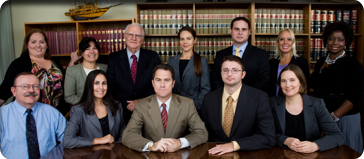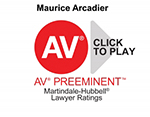Improving USERRA
Under the Uniform Services Employment and Reemployment Rights Act, in determining whether to grant judgment under Fed. R. Civ. P. 56, should a District Court require direct evidence
IV. THIS COURT SHOULD GRANT CERTIORARI SINCE THERE IS A SPLIT IN THE CIRCUITS WITH RESPECT TO EVALAUTING THE TRUTHFULNESS OF AN EMPLOYER WHO OFFERS MULTIPLE EXPLANATIONS IN A MOTION FOR JUDGMENT AS A MATTER OF LAW WHEN THE DECISION MAKER HAs MADE STATEMENTS OF MATERIAL FACT WHICH A JURY COULD FIND ARE FALSE.
This Court has held in cases analogous to USERRA that: evidence may indirectly establish that an employer’s explanation for its adverse action is unworthy of credence. Burdine, 450 U.S. at 256; Reeves, 530 U.S. at 147; McDonnell Douglas, 411 U.S. at 804-805.
The Eleventh Circuit held that: “[Petitioner] left unchallenged Melbourne’s evidence that the Forsberg, believed that [Petitioner] was not trustworthy, did not make good decisions, did not exercise good judgment, and could not work with others.”
However other Circuits have held that when an employer offers multiple reasons for its adverse action that evidence may be challenged indirectly by attacks on credibility. see Fuentes v. Perskie, 32 F. 3d 759, 764 n. 7 (3rd Cir. 1994) (stating the rejection of some of the defendant's proffered reasons may impede the employer's credibility so that a factfinder may rationally disbelieve the remaining proffered reasons, even if no evidence undermining those remaining rationales in particular is available); Russell v. Acme-Evans Co., 51 F. 3d 64 (7th Cir. 1995) (stating in which the multiple grounds offered by the defendant for the adverse action ... are so intertwined, or the pretextual character of one of them so fishy and suspicious, that the plaintiff [can] withstand summary judgment); Smith v. Chrysler Corp., 155 F.3d 799, 809 (6th Cir 1998) (stating a multitude of suspicious explanations may itself suggest that the employer's investigatory process was so questionable that any application of the "honest belief" rule is inappropriate); Tyler v. RE/MAX Mountain States, 232 F. 3d 808, 814 (10th Cir. 2000) (stating if a person is shown to be a liar in an outrageous manner…, the inference that the person is non-credible, and should not be believed as to other issues, is a reasonable one).
Other Circuits require Plaintiffs bring forth evidence separately and directly contradicting each explanation put forth by an employer to justify its adverse action. see Chapman v. AI Transport, 229 F.3d 1012 (11th Cir. 2000) (stating that evidence of pretext must be available for every reason); Wallace v. Methodist Hospital System, 271 F.3d 212 (5th Cir. 2001) (stating evidence must rebut each of the nondiscriminatory reasons articulated by employer).
These different methods of evaluating the truthfulness of an employer’s articulated reasons create inconsistent litigation throughout the Circuits. The standard used in this case rewarded the Defendant for engaging in post hac rationalization, excused inconsistent reasons, and requires Plaintiffs in USERRA cases to beat an affirmative defense only with direct evidence. If impeaching a decision maker’s representations of material fact is not enough to overcome an affirmative defense of subjective belief it would be nearly impossible to pursue a USERRA case.
More Information: For more information about employment law and userra rights, please see our employment law page
Attorney: Maurice Arcadier
Status: Pending
Date Filed: July 7th, 2013








